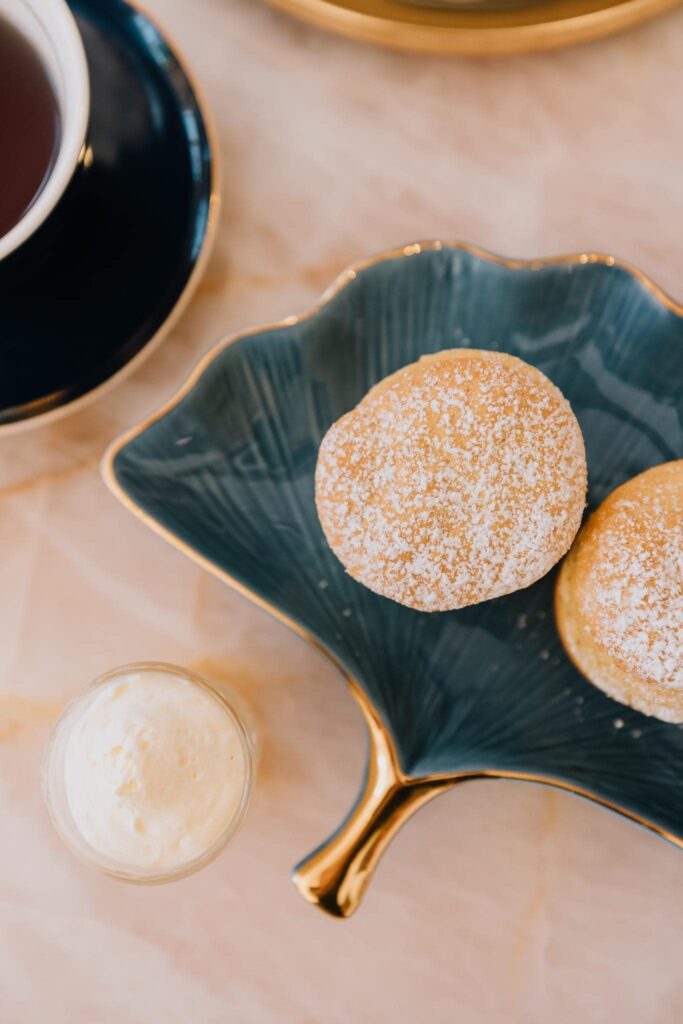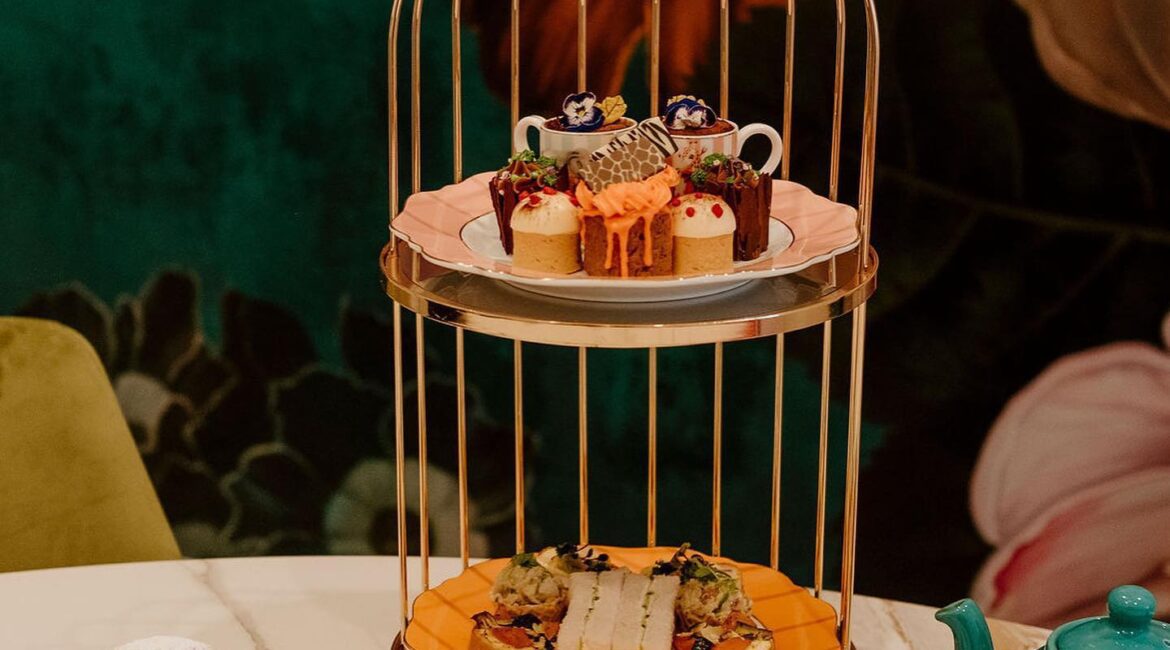If you’re anything like us, there’s nothing quite like a relaxing cup of tea in the afternoon to relax and unwind a little.
What makes this even better? We love to add a delicious little bite, such as a biscuit or scone to complement the flavours and warmth in the tea!
Hmm, and even better yet? Well, that would have to be a dedicated hour or two spend in the company of great friends or family, relishing an assortment of sweet and savoury treats together.
That brings us to one of our favourite tea rituals – Devonshire Tea (a term now often used interchangeably with “Afternoon Tea” or “High Tea”) – we aren’t biased, we love them all!
Traditionally, Devonshire Tea refers to tea, scones, jam and cream – but keep reading to discover a little more about the interesting history behind it all, and some fun facts!
The History of Our Beloved Devonshire Afternoon Tea
Devonshire Tea
It takes its name from Devon in England, where it is said to have originated…which makes sense! It refers to tea had with scones, jam and clotted cream
Afternoon Tea
It also known as “low tea”, because it was usually taken in the sitting room with low tables near sofas and chairs.
Although tea drinking had already been enjoyed for many (many) years, the concept of Afternoon Tea came much later in the mid-19th Century!
Who do we have to thank for this custom?
Anna Russell, the Duchess of Bedford is credited with having paired tea drinking with a variety of delicious British treats.
Like most great ideas, it came from a true need; she often found herself hungry and felt a “sinking feeling” in her stomach each afternoon around four o’clock.
And so it began, at first with just a tray of tea, bread, butter and cake, and later a daily tea ‘ritual’, more additions and friends joining.
Afternoon Tea provided sustenance in between attending the theatre or playing cards before dinner/supper, which was often served much later in the evening in many households.
There are considered to be three main Afternoon Tea varieties:
- Cream Tea (aka Devonshire Tea): tea, scones, jam and cream
- Light Tea: tea, scones and sweet treats
- Full Afternoon Tea: tea, scones, sweets and savouries
What about High Tea?
Well, it is perhaps not as “high society” as we initially thought!
High Tea was actually for the working class, who ate this either in place of dinner or as an extra meal to get them through the day.
It was named “high” because it was eaten standing up or on the “high” main dining table. High tea generally consisted of heavier food items like dense breads, meats/pies, scones and/or cheese on toast with tea. Simple, yet filling.
Did you know – it’s also why a lot of Brits refer to their evening meal as “tea”!
How Did Tea Drinking and Afternoon Tea “High Tea” Become SO Popular?
Royals throughout history played a big role in the popularity of tea!
- Portuguese Infanta Catherine de Braganza (wife of King Charles II) was an avid tea drinker. She helped cement this previously “foreign” tea tradition in England. Her influence made tea more popular (people wanted to copy what the regal royals did)!
- Later, Queen Anne (1665-1714) chose tea over ale (the common alternative to water, which was often contaminated at the time) as her regular breakfast drink. This was considered very unique!
- As you can imagine (especially if you’ve ever watched Downton Abbey or similar) – this trend was largely reserved for larger, more affluent households who could afford the time and resources for a daily Afternoon Tea (and butlers to serve it).
- It became somewhat of a fashionable, social event for ladies of “high society” to pause for refreshment in this way, show off a little, and dress up.
- They would wear their favourite long dressed, paired with gloves and hats, and afternoon tea was most often held in the drawing room.
- Tea was poured from silver tea pots, and food served upon dainty, decorated porcelain/bone china teacups, saucers and plates
Interesting Tea Facts
Extended Pinky Finger
Have you seen this before? A pinky finger extended whilst drinking tea?
- There’s actually no need to do this (unless you really want to) as it’s not associated with Afternoon Tea at all!
- Instead, it’s s thought to have originated back when tea was first brought to Europe from China. The porcelain teacups were made in China and were smaller cups without handles.
- English drinkers would keep as few fingers on the side as possible to avoid the heat or spilling hot liquid on themselves.
- Others say the pinky up helps balance the tea cup whilst sipping – especially delicate bone china that had smaller handles for less finger room!
What do you think?
“Spill the Tea”!
- Spill the tea – aka tell me the hot gossip, is a phrase that supposedly dates all the way, way back to the 18th Century.
- Women would sit together (usually on their front porches) and chit chat with a cup of tasty tea.
The Earl of Sandwich
- The humble sandwich is all thanks to John Montagu, the Earl of Sandwich (clearly it was named after him)!
- He had the idea of popularising placing fillings between two slices of bread and this idea started the finger sandwich that is enjoyed at Afternoon Tea and High Teas today.
The Great Debate
Jam or Cream first?
- According to Her Majesty Queen Elizabeth, it’s jam first…we say whatever floats your boat 😊
However you choose to enjoy your Afternoon Tea or High Tea, we invite you to try it with one of our Brookfield Tea House boutique loose leaf blends.
You’ll find options sourced from all across the globe – including our own Australiana collection.

High Tea Sydney, High Tea South West Sydney, High Tea Camden, High Tea Australia, High Tea NSW, Brookfield House High Tea

